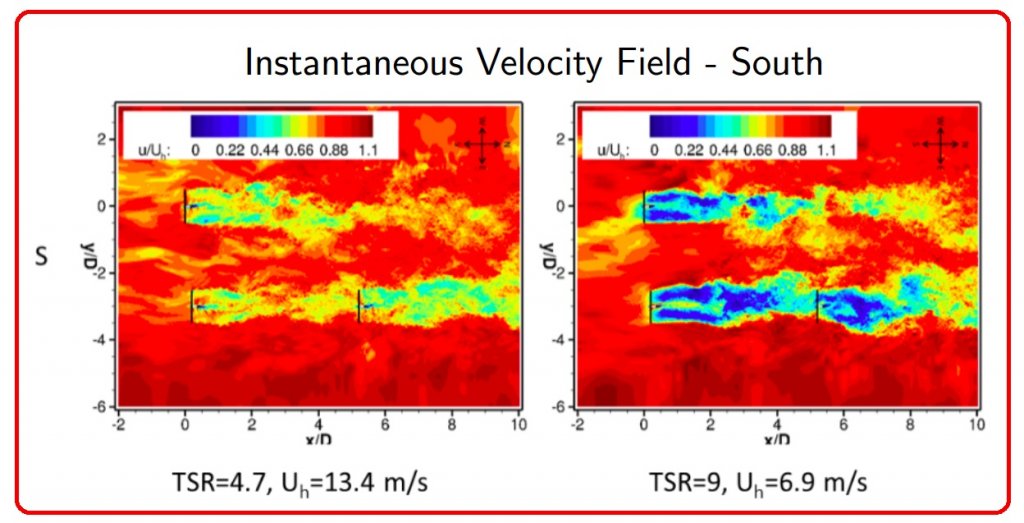This article comes from Sandia National Lab’s Wind & Water Power news and is reposted with permission.
The total energy produced by a wind farm depends on the complex interaction of many wind turbines operating in proximity with the turbulent atmosphere. Sometimes the unsteady forces associated with wind negatively influence power production, causing damage, and increasing the cost of producing energy associated with wind power. Wakes and the motion of air generated by rotating blades must be better understood. Predicting wakes and other wind forces could lead to more effective wind turbine designs and farm layouts, thereby reducing the cost of energy, allowing the United States to increase the installed capacity of wind energy.

Sandia team generated wake flows images like these with wind from several directions. More here: https://goo.gl/cQ5LBE
The Wind Energy Technologies Department at Sandia has collaborated with the University of Minnesota to simulate the interaction of multiple wind turbines. By combining the validated, large-eddy simulation code VWiS with Sandia’s HPC capability. This consortium has improved its ability to predict unsteady forces and the electrical power generated by an array of wind turbines. These quantities were found specifically for the Sandia Scaled Wind Farm Technology (SWiFT) facility, aiding the design of new wind turbine blades being manufactured as part of the National Rotor Testbed project for the Department of Energy.
Three specific areas of research were addressed with different simulation cases. First, researchers investigated the persistence of the wake for unique distributions of force along the wind turbine blades. Unique-force distributions produced unique-wake contours. However, turbulence removed any differences beyond 4-rotor diameters downstream. The next simulation investigated the effect of scale on wake persistence and showed that two wind turbines of the same design but different scales will produce different wakes. Finally, the simulations of the experimental SWiFT facility quantified the potential for increased power and force fluctuations of downwind turbines. The research findings have already influenced the aerodynamic design of new wind turbine blades being considered at Sandia. This research was presented at NAWEA 2015 Symposium.
Filed Under: News





These tests are sure to benefit the wind power industry. Future tests should also include Blade Relief Technologies blade designs which improve mixing downwind after power extraction , and also blade stability with bumpy air flow.